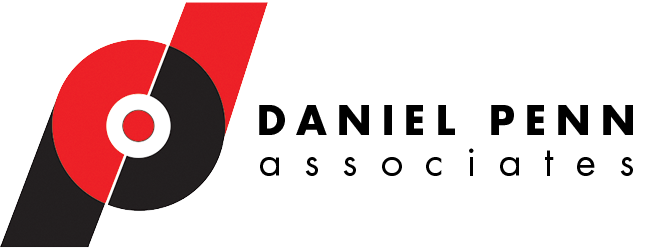
Manufacturing Facility Expansion Planning: A Practical Guide

By Mike Beauregard, Senior Consultant, Daniel Penn Associates, LLC.
Effective manufacturing facility expansion planning can turn a disruptive construction project into a powerful competitive advantage. When leaders combine a clear strategy, sound layout design, and strong change management, they can increase capacity, improve flow, and support future automation—without hurting current operations.
Learning Objectives
By the end of this article, you will be able to:
- Define the steps your manufacturing facility must take when planning a reconfiguration or expansion.
- Understand key considerations that affect a successful expansion.
- Identify constraints so that your project runs smoothly.
Why Careful Facility Expansion Planning Matters
Modifying a facility’s production footprint and improving its process flow can greatly increase efficiency and output during an expansion or reconfiguration. However, without proper planning, this complex task can quickly create inefficiencies, cost overruns, and serious business disruptions.
A Real-World Example
To illustrate these ideas, we will look at our recent work with a national manufacturer of power supplies and lighting fixtures. In this project, we helped the company plan a facility expansion and process improvements to optimize workflow, efficiency, and scalability.
Below are the key principles and lessons learned from that engagement. For more examples of how we apply similar methods, see our facility layout and process improvement case studies.
1. Define Business Objectives and Growth Strategy
The company’s 20–30% annual growth rate required a 26,000-square-foot expansion at its New England facility. The main drivers included the need to increase production capacity for its two primary lighting product lines. In addition, leadership wanted to be sure that current decisions would support future automation and lean production goals.
As a result, every major decision had to align with both current needs and long-term strategy. Clear manufacturing facility expansion planning kept everyone focused on the same goals.
Takeaways
- Align any facility expansion with long-term business goals.
- Assess market demand, capacity needs, and production forecasts before committing to a design.
- Ensure that the facility expansion supports market demand and future scalability.
- Future-proof the facility for automation, Industry 4.0, and new technologies.
2. Facility Space Planning and Site Constraints
Next, the company reviewed how space was used across the site. The north–south aisleway was identified as a priority for factory flow efficiency. At the same time, natural light played a role in how they oriented warehouse areas and storage racks.
To support future growth, they chose to expand the flexible lighting encapsulation room. This decision positioned the facility for additional encapsulation equipment and more automation later on.
During this phase, it also helped to compare their ideas with general best practices in factory layout and safety from sources like OSHA manufacturing safety resources.
Takeaways
- Assess structural and zoning constraints before starting an expansion.
- Optimize the facility layout for today’s efficiency and tomorrow’s scalability.
- Examine structural and environmental factors such as soil conditions, load-bearing limits, climate control, and emissions.
- Build in flexibility for future growth with modular designs and scalable layouts.
3. Process Flow Optimization
To further support the expansion, the company carefully analyzed its process flow.
The team mapped the workflow from Receiving to Subassembly. During this review, they found bottlenecks in handling long lighting fixtures and in moving trays. As a result, they recommended portable tray carts to reduce strain and improve flow. They also improved shipping and receiving workflows to reduce staging clutter and increase efficiency.
In addition, they used basic lean tools such as value stream mapping and spaghetti diagrams to see how people and materials moved through the plant.
Takeaways
- Use lean manufacturing principles and process analysis to optimize flow.
- Test different workflow and layout models, such as U-shaped, straight-line, cellular, or hybrid flow designs.
- Minimize non-value-added material handling wherever possible.
- Consider working with experienced lean manufacturing consulting services to speed up analysis and design.
4. Equipment Selection and Placement
Another key step in the project was choosing and placing equipment. The company considered adding a second SMT line and evaluated whether to bring powder coating in-house. However, they ultimately chose not to add powder coating due to environmental concerns.
They also considered automated encapsulation and decided to allocate space in the expansion for CNC machining. This forward-looking approach helped ensure that new equipment would fit both physically and operationally.
Takeaways
- Compare the cost, capability, and capacity of new versus existing equipment before investing.
- Evaluate the need for upgrades, relocation logistics, and how new equipment will integrate with legacy systems.
- Plan for automation and robotics, including AI and IoT-enabled equipment, and remove redundant or non-core operations where appropriate.
- Ensure there is enough space for maintenance access and plan for downtime.
5. Supply Chain and Inventory Management Adjustments
In addition, the expansion required changes to the supply chain and inventory practices. The company improved its receiving staging area by adding marked floor zones, optimizing rack orientations, and increasing incoming inspection capabilities. At the same time, they worked to reduce excess inventory and organize the work area using 5S techniques.
These steps supported faster flow, better visibility, and smoother operations.
Takeaways
- Reconfigure warehouse layouts and redesign material flow for raw material intake, storage, WIP, and finished goods handling.
- Implement just-in-time (JIT) practices instead of relying on a large buffer inventory to cut excess stock.
- Consider how changes will affect supplier logistics, including lead times, shipping routes, and dock configurations.
- Organize the area with 5S and remember the last two Ss: Standardize and Sustain.
6. Workforce Considerations and Change Management
The new layout was also designed with people in mind. For example, lighter, more agile tray carts were introduced to reduce stress and strain on workers. The company also planned training for teams on new workflows in the expanded facility.
To support a culture of lean implementation, they scheduled Kaizen events to refine processes and engaged employees in continuous improvement. In addition, they began cross-training staff in Receiving, Shipping, and the Warehouse and documented these skills in a cross-training matrix.
If you want to strengthen this part of your own manufacturing facility expansion planning, structured continuous improvement and Kaizen workshops can help employees adapt more quickly.
Takeaways
- Involve employees in layout planning to gain their input and buy-in.
- Make ergonomics and safety improvements to reduce fatigue and injury risk.
- Provide workforce training and upskilling, especially when adding new workflows or automation.
- Communicate changes often and clearly to reduce resistance and support the expansion.
7. Energy Efficiency and Sustainability
Energy efficiency and sustainability were also key concerns. The company evaluated different HVAC configurations for the expanded encapsulation room and explored energy incentives from the local utility provider to reduce operating costs.
Because they are a lighting manufacturer, they also drew on internal expertise. One of their lighting design engineers created an energy-efficient lighting plan that still provided bright, comfortable work areas. They also consulted resources like the U.S. Department of Energy’s industrial energy efficiency programs for practical guidance.
Takeaways
- Ensure that lighting, HVAC, and process improvements support the expanded footprint in energy-efficient ways.
- Explore energy incentives from utility providers to offset project costs.
- Consider sustainable materials and waste management strategies.
- Look into energy-reduction and conservation strategies from the start.
8. Budgeting, ROI Analysis, and Cost Control
From a financial standpoint, the company initially planned its expansion in two phases. After a closer financial review, however, they decided to move forward with a single-phase final layout to reduce cost and disruption.
They also evaluated whether to move outsourced operations in-house. After analyzing the specialized labor, environmental, and equipment/tooling costs, they decided it was more cost-effective to keep some operations outsourced.
Takeaways
- Prioritize low-cost, low-disruption expansion strategies whenever possible.
- Carefully assess whether outsourcing is more cost-effective than adding new in-house capabilities.
- Consider both capital and operating costs when planning the expansion.
- Compare CapEx versus OpEx options, such as leasing versus buying equipment, and review construction cost estimates in detail.
9. Regulatory Compliance and Safety Planning
Regulatory compliance and safety planning are central to any expansion. In this case, a new compressed air system upgrade was planned to support current operations and allow for future automation. The company also planned new factory restrooms to meet OSHA capacity requirements as the workforce grows.
Takeaways
- Plan for OSHA and environmental compliance from the very beginning.
- Design facilities with worker safety and comfort in mind, including shorter travel distances to restrooms and support areas.
- Plan for fire suppression, hazardous materials handling, and emergency exits.
- Integrate quality control and ISO compliance where appropriate.
10. Project Execution and Timeline Management
Finally, the company focused on disciplined project execution. The executive team appointed a project coordinator to lead the expansion and move. This coordinator created a detailed plan and worked closely with the building owner and internal operations to complete building changes and move operations with minimal disruption.
At the same time, the building architect and lighting designer used CAD files of the final layout prepared by Daniel Penn Associates (DPA). After the move, Kaizen events were planned to help teams refine workflows and address any remaining issues.
Takeaways
- Collaborate early with architects, engineers, and lighting designers.
- When appropriate, consider phased implementation instead of a full-scale buildout to reduce business disruption.
- Ensure cross-functional coordination with engineers, operators, finance, logistics, and HR teams.
Conclusion: Turning Expansion into a Strategic Advantage
The facility layout and process improvement project conducted by Daniel Penn Associates (DPA) for this lighting manufacturer shows how a structured, data-driven approach can turn expansion into a clear strategic advantage.
How DPA Supported the Expansion
By performing an in-depth analysis of current operations, identifying key bottlenecks, and developing several layout options, DPA helped the company choose a path that balanced efficiency, cost, and flexibility. The final layout improved material flow, streamlined workstation arrangements, and allowed room for future automation.
Positioning the Company for Long-Term Growth
In addition, the plan minimized disruption by supporting smoother workflows in shipping, receiving, and support functions. As a result, the manufacturer is now better prepared to meet growing production demands while maintaining quality and safety. With this expansion, the company is well-positioned for long-term, sustainable growth and has a repeatable model for future manufacturing facility expansion planning initiatives.
Other articles you may be interested in:
About the Author

DPA International Consultant Mike Beauregard
Mike Beauregard is an international consultant and lecturer on the application of lean manufacturing and quality improvement techniques to manufacturing, warehousing, and distribution operations. He has successfully applied improvement techniques in companies ranging from 10-person startups to Fortune 500 manufacturers. A chemical engineering graduate of the University of Maryland, Mike is a registered Professional Engineer and a Certified Quality Engineer. He is an eight-time member of the Board of Examiners for the Malcolm Baldridge National Quality Award and served on the two Connecticut quality awards as a senior examiner, team leader, and instructor. He is certified in lean implementation by the Supplier Excellence Alliance, the aerospace supply-chain consortium, and is certified as a lean six-sigma master Black Belt by the Management and Strategy Institute. While living in Japan, Mike studied and applied the Toyota Seisan Hoshiki (production system) with tutelage from Ohno san. Mike has co-authored 21 books and training systems on quality improvement and lean manufacturing tools. He recently authored a book on downtime reduction techniques based on his 30 years of hands-on work in that area.
Share our content

